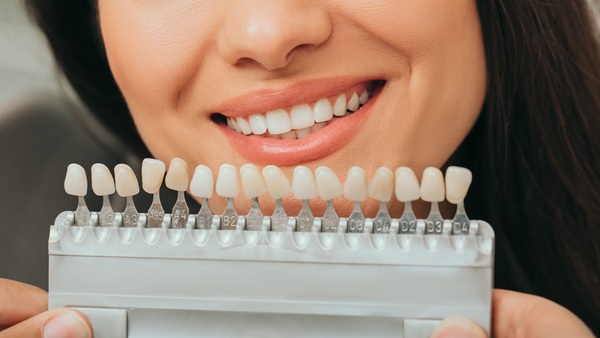For years, clear aligners made their way to the dental scene and stole the spotlight. Many adults preferred them mostly because of how they look. With its discreet appearance, modern technology and convenient use, many patients were inspired to get it.
But lately, there’s been an interesting shift: dental braces, especially metal ones, are making a comeback in adult orthodontics. Why are more adults now considering dental braces treatment over aligners?
Let’s explore the reasons and whether this trend might make sense for you.
Recap on Dental Braces: How Do They Work?
Dental braces are fixed orthodontic devices, where brackets are bonded to your teeth and connected with wires and sometimes elastics, that gradually move teeth into the right position. They provide continuous force and better control over complex movements compared to removable systems.
“Dental aligners vs braces” is often a comparison of flexibility and aesthetics versus control and reliability. While braces involve brackets and elastics, aligners use removable plastic trays to straighten teeth. Because braces cannot be taken out, they don’t rely on patient compliance (i.e., remembering to wear them).
Braces have been used successfully for decades, and modern braces have improved a lot. Today, they’re smaller, stronger, and more comfortable than the ones we knew back in the day.
What’s Fueling the Braces Resurgence for Adults?
So, what are the reasons why braces have surged again? As orthodontists and dentists in Bellevue Hill, here are five reasons why they have been becoming popular again.
1. Predictability and Control
Many orthodontists say that braces are still the “gold standard” when it comes to handling complex cases, like crowding, bite corrections, vertical movements, rotated teeth, and more. The fixed wires and brackets from the braces give the clinician better control over each tooth.
This predictability is a big reason why some adults prefer braces over aligners for tougher cases.
2. No Compliance Issues
One of the biggest challenges with aligners is wearing them consistently for about 20 to 22 hours a day. Many adults find this difficult and quite inconvenient because of work, travel, or lifestyle. With braces, you don’t have to remember to take them out and put them back in. They work all the time by default.
3. Stylish Identity and Social Media
Believe it or not, metal braces are becoming cool again. Some adults are embracing the look and treating it as a fashion statement. In 2025, netizens on social media have also helped rebrand braces from something to hide to something to be proud of. This shift reflects a broader acceptance of visible treatment paths as a valid personal choice.
4. Cost and Value
In many cases, traditional metal braces are more cost-effective than premium aligner systems. While aligners have become more affordable over time, the fixed nature of braces and simpler manufacturing often make them a better value, especially for patients who have complex bite corrections.
5. Handling Tougher Cases
Some movements are still more reliably done with braces, like moving back molars, correcting deep bites, or vertical tooth movements (intrusion or extrusion). Braces are also better suited for coordinating the use of elastics (rubber bands) and TADs (mini-implants used for anchorage) for more advanced orthodontic mechanics.
Braces vs Aligners: Why Some Adults Switch Back
For an even clearer picture of braces vs aligners, the table below shows their important features and how patients may benefit from them.
Pros and Cons Compared
| Feature | Braces | Aligners |
| Force & Control | Strong, continuous, good for complex moves | Depends on wear time and aligner design |
| Compliance | No worry—always working | Must be worn almost all day |
| Visibility | More noticeable (though ceramic/lingual help) | Discreet; near invisible |
| Hygiene & Diet | Requires extra care, avoid some foods | Removable, easier brushing & flossing |
| Emergencies | Broken wire or bracket can be fixed | Lost or damaged aligner may delay treatment |
What to Expect with Adult Braces Treatment
Treatment Time
Adult braces often take 18–36 months, depending on the complexity. Aligners sometimes promise faster results for mild-to-moderate corrections, but when they involve complex dental cases, like a malocclusion, overcrowding, crooked teeth and other cases that cannot be handled by aligners, braces are often faster overall.
Maintenance & Care
With braces, you must:
- Brush and floss carefully around brackets and wires
- Avoid hard, sticky, or crunchy foods
- Visit your orthodontist every 4–6 weeks for adjustments
Despite the extra care involved with dental braces, many patients still find the results worth it.
Retention After Treatment
After braces are removed, retainers are critical to maintain your new alignment. Whether you had braces or aligners, wearing retainers as instructed is key to ensuring your new smile lasts long.
Understanding the orthodontic treatment timeline better lets you know how to prepare for your dental braces journey in case you move forward with getting it.
Metal Braces Are Back and for Good Reason
While metal braces did not entirely go away, patients still see the benefits they can get from getting them. And while many despise how it looked many years ago, people are now more comfortable embracing them.
Braces offer unmatched control, no dependence on patient compliance, cost effectiveness, and better results in many difficult cases. For many adults in 2025, they’re not just an alternative, but the best choice.
If you’re considering getting dental braces, it’s still best to ask a qualified dentist to discuss your options and how they may complement your lifestyle. Ask our orthodontists at Bellevue Hill Dental for more information about braces in Bellevue Hill.
Schedule an appointment with us for better guidance.



